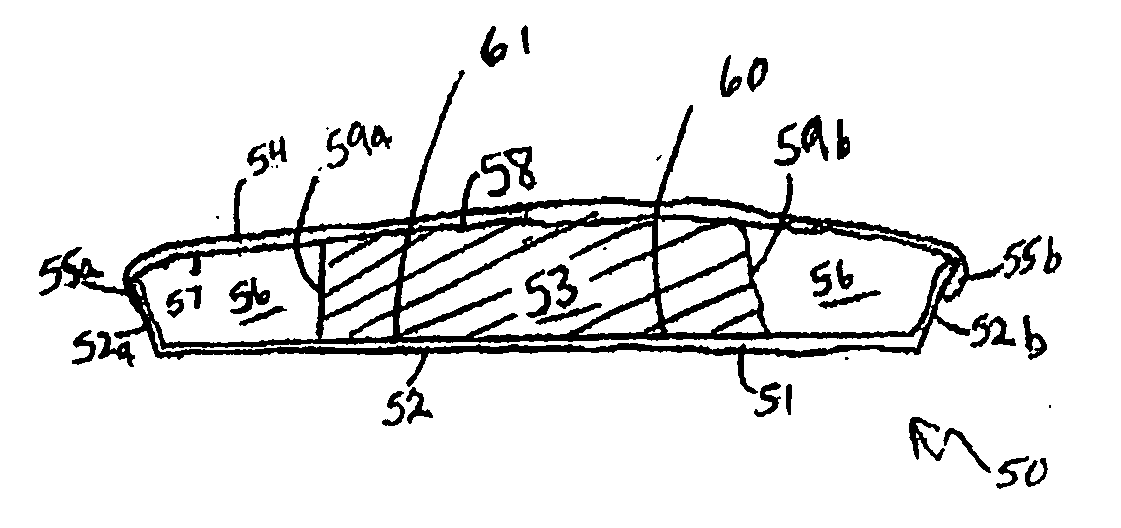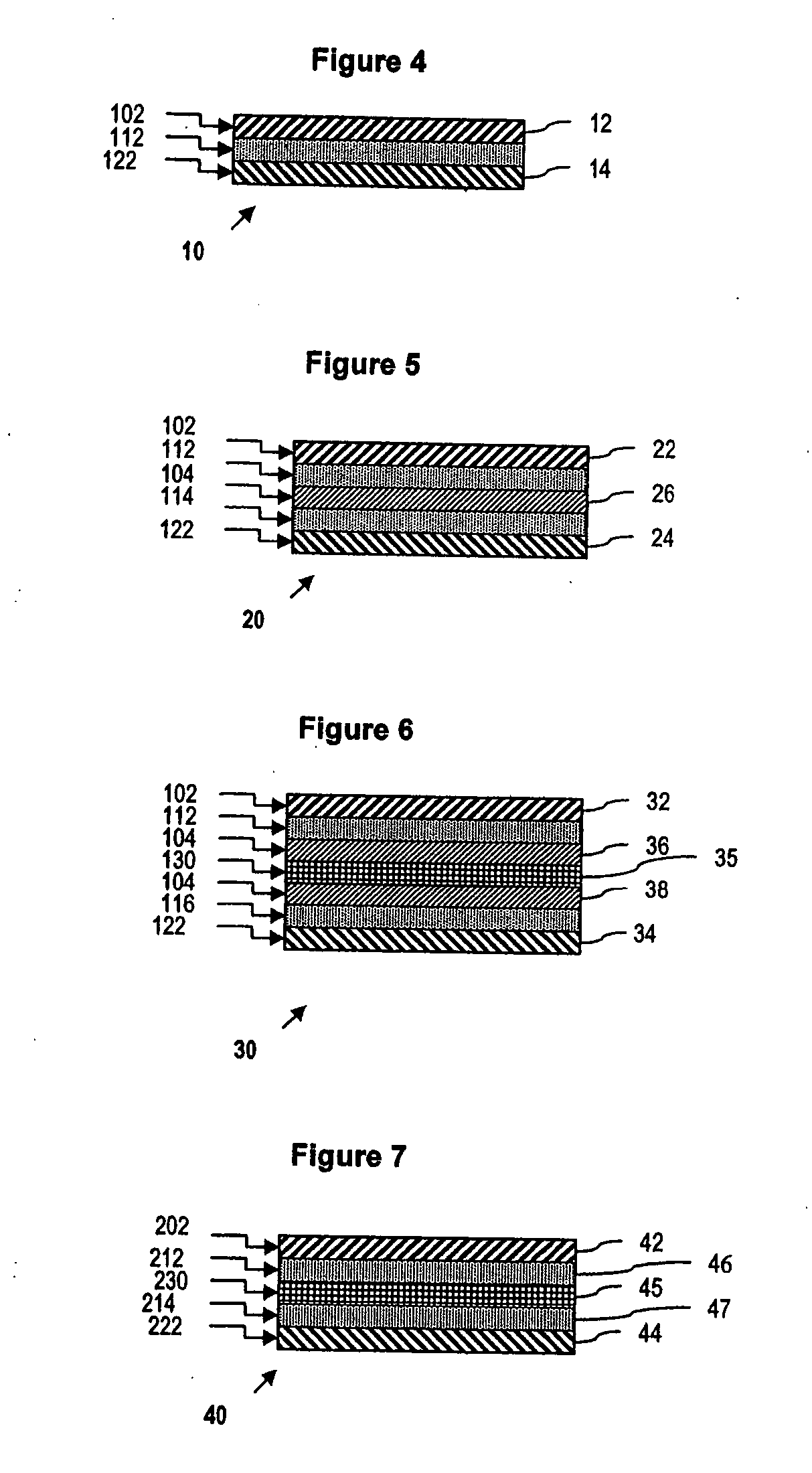Method for distributing a myoglobin-containing food product
a food product and myoglobin technology, applied in the field of distributing or commercializing myoglobin-containing food products, can solve the problems of insufficient preservation of favorable meat color, inability to meet the needs of consumers, and often becoming inacceptable before the packaging of mea
- Summary
- Abstract
- Description
- Claims
- Application Information
AI Technical Summary
Benefits of technology
Problems solved by technology
Method used
Image
Examples
example 1
[0220] Four individual packaged boneless beef ribeye steaks were purchased from a retail outlet and stored at 2.1° C. and 40 percent humidity. L*a*b* values were obtained for all 4 packages at Day 1 and 8, as shown in Table 1.
TABLE 1ObservedSampleDayL*a*b*Color1145.421.713.4Red847.816.29.0Red2153.618.314.2Red843.923.213.9Red3148.121.614.4Red846.716.913.1Red4152.316.011.1Red849.519.313.3Red
[0221] On Day 12, Samples 1, 2 and 3 were opened. The meat from Sample 1 was repackaged as Test 1 in a multilayer barrier pouch with 17,500 ppm NaNO2 in the sealant layer; the meat from Sample 2 was repackaged as Test 2 in a multilayer barrier pouch with 17,500 ppm NaNO2 in the sealant layer; and the meat from Sample 3 was repackaged as Control in a multilayer barrier pouch. (Sample 4 was retained for later use.) After repackaging, L*a*b* values were obtained for Test 1, Test 2 and Control 1 at three times on Day 12, two times on each of Day 13, 14 and 15, and one time on Day 17, as shown in Tabl...
example 2
[0224] A large selection of beef was obtained from a beef processor. At the time of receipt, the beef was 7 days post mortem; and the day of receipt was designated as Day 7. On Day 7, three slices of beef were removed from the large section and packaged as Replicate 1, Replicate 2 and Replicate 3 in three separate multilayer barrier bags with 17,500 ppm NaNO2 in the sealant layer. After repackaging, L*a*b* values were obtained for the three replicates on Day 7, 8, 9, 13 and 21, as shown in Table 5.
TABLE 5SampleDayL*a*b*Observed ColorReplicate 1Day 736.316.18.1RedDay 834.118.87.5RedDay 935.022.78.6RedDay 1338.719.18.7RedDay 2137.921.48.4RedReplicate 2Day 735.815.37.7RedDay 841.214.78.3Dull RedDay 940.418.48.6RedDay 1343.117.89.9RedDay 2142.918.18.9RedReplicate 3Day 735.915.37.7RedDay 834.814.87.7Dull RedDay 935.420.68.8RedDay 1336.520.58.8RedDay 2135.319.38.9Red
[0225] On Day 14, four additional slices of beef were removed from the large section of beef received on Day 7 and package...
example 3
[0228] Six samples of fresh pork were packaged in various barrier films. Control 1 was fresh pork packaged in a barrier film; Test 79 was fresh pork packaged in a barrier film with 2,500 ppm NaNO2 in the sealant layer; Test 80 was fresh pork packaged in a barrier film with 5,000 ppm NaNO2 in the sealant layer, wherein the NaNO2 had an average particle size of 1 micron; Test 81 was fresh pork packaged in a barrier film with 5,000 ppm NaNO2 in the sealant layer, wherein the NaNO2 had an average particle size of 10 microns; Test 82 was fresh pork packaged in a barrier film with 17,500 ppm NaNO2 in the sealant layer; and Test 26 was fresh pork packaged in a barrier film with 12,500 ppm NaNO2 in the sealant layer. After packaging, L*a*b* values were obtained for the six samples at Day 1, 2, 3, 10, 17, 24, 34 and 45 as shown in Table 9.
TABLE 9SampleDayL*a*b*Observed ColorTest 79Day 155.36.36.7PinkDay 255.16.66.8PinkDay 356.16.87.0PinkDay 1057.37.28.4PinkDay 1757.17.08.8PinkDay 2457.26.8...
PUM
| Property | Measurement | Unit |
|---|---|---|
| Temperature | aaaaa | aaaaa |
| Fraction | aaaaa | aaaaa |
| Fraction | aaaaa | aaaaa |
Abstract
Description
Claims
Application Information
 Login to View More
Login to View More - R&D
- Intellectual Property
- Life Sciences
- Materials
- Tech Scout
- Unparalleled Data Quality
- Higher Quality Content
- 60% Fewer Hallucinations
Browse by: Latest US Patents, China's latest patents, Technical Efficacy Thesaurus, Application Domain, Technology Topic, Popular Technical Reports.
© 2025 PatSnap. All rights reserved.Legal|Privacy policy|Modern Slavery Act Transparency Statement|Sitemap|About US| Contact US: help@patsnap.com



